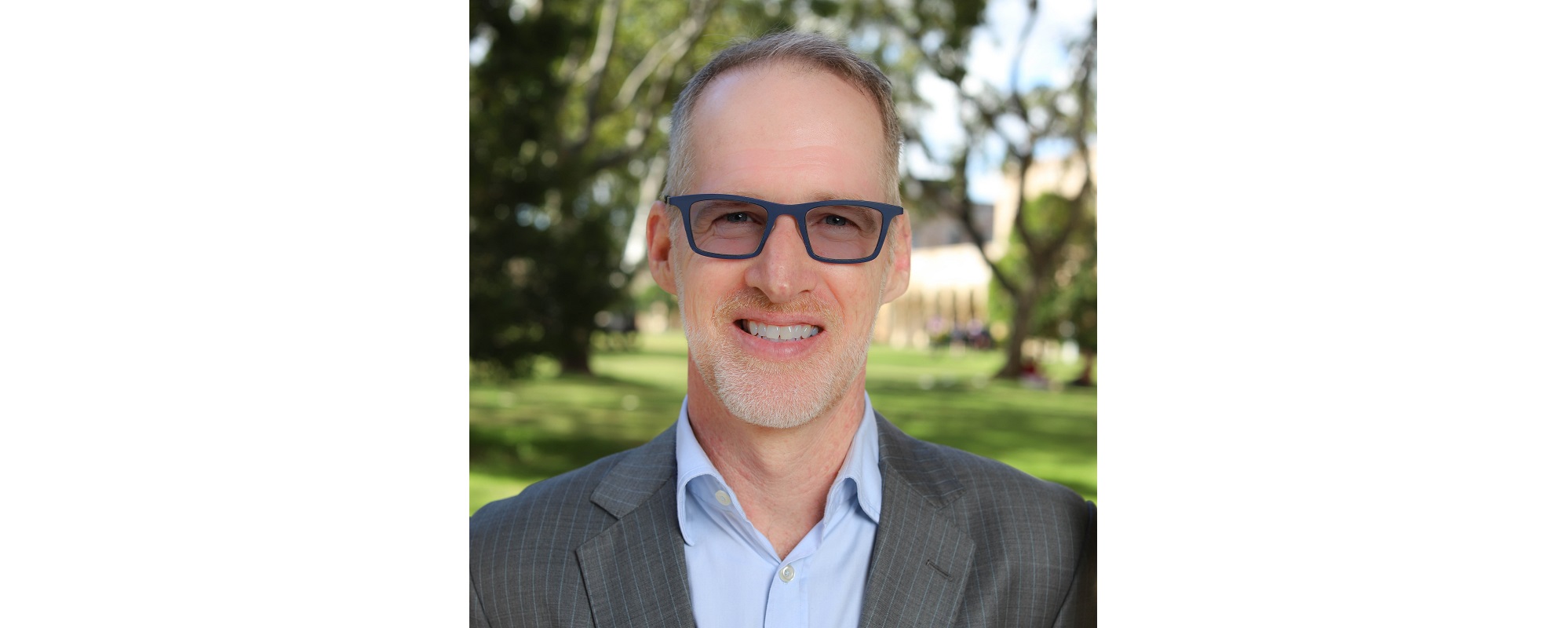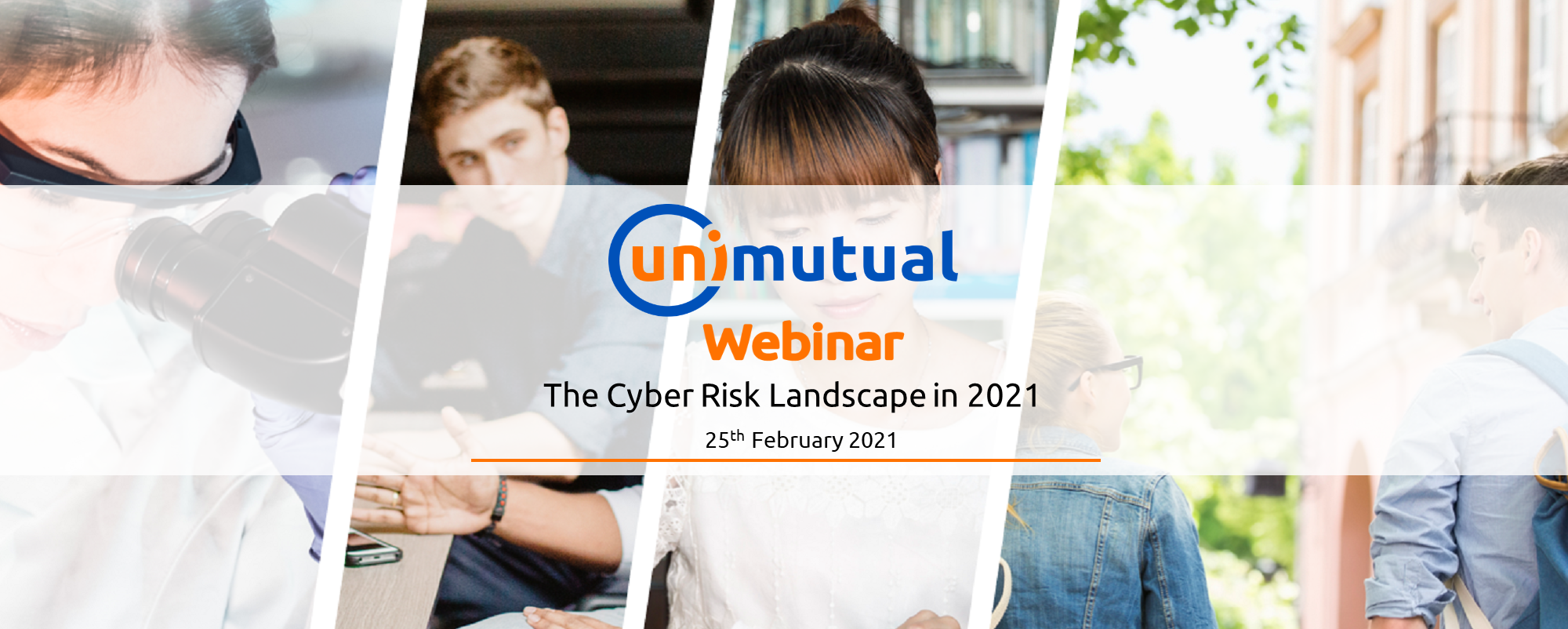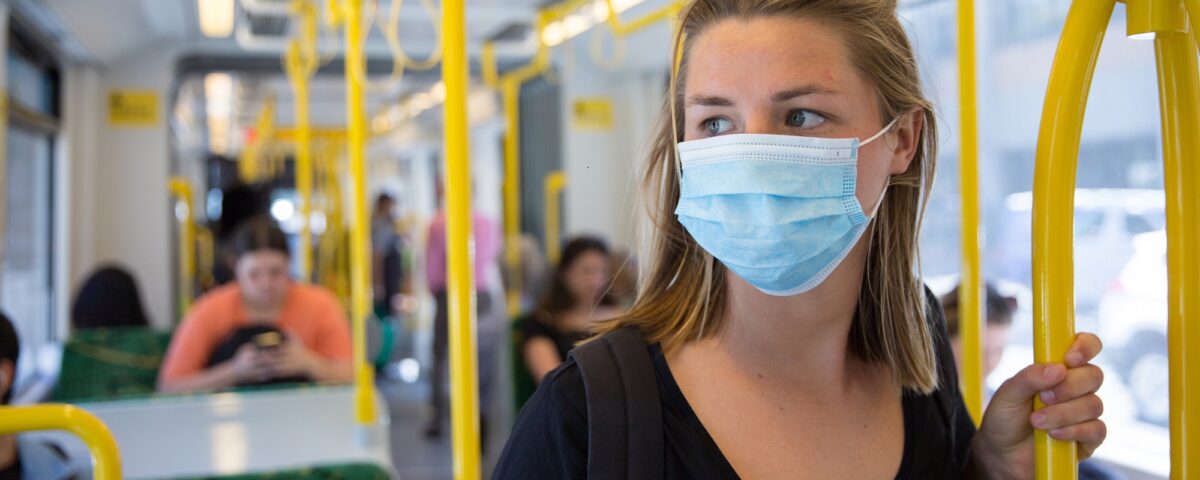
New Unimutual Board Member – Andrew Flannery
February 20, 2021
Webinar – The Cyber Risk Landscape in 2021
February 26, 2021Almost a year into the COVID-19 Pandemic, Unimutual’s Risk Manager, Simon Iliffe seeks to answer some of the pending questions we all have:
- When will the pandemic end?
- Will COVID-19 ever be eradicated?
- Will face-to-face lectures come back?
- What challenges and opportunities lie ahead for higher education?
- How can my institution thrive in a COVID-modified world?
When will the Pandemic End?
Consensus is that the COVID-19 pandemic will be here for a while yet, with hopes of achieving “herd immunity” pinned on the rollout of a vaccine. The general concern is that if global vaccination efforts are patchy, the virus will persist in a fragmented format, mutate, and potentially reduce the efficacy of the current vaccines. This is particularly relevant in countries without the financial or infrastructure means to deliver sufficient doses of vaccine to the majority of their population. As explained The World Economic Forum’s Global Risks Report 2021, the “underlying disparities in healthcare, education, financial stability has led the crisis to disproportionately impact certain groups and countries”.
In terms of vaccine immunity, we do not yet know how long immunity from infection from COVID-19 will last, or how good vaccines will be at protecting people. Vaccines for other coronaviruses that are endemic (widespread) in the human population, such as those that cause colds, only provide temporary immunity of about one year. Some diseases only give temporary immunity through natural infection, and people become susceptible again after a period of time. A virus or bacteria can also evade the immune memory by mutation so that people with immunity to an older strain will become susceptible to the new version of the disease. Depending on whether immunity – either from natural infection or from vaccination – is permanent or temporary, we may need yearly vaccine updates to protect us from COVID-19.
The more realistic scenario is that it will be added to the (large and growing) family of infectious diseases referred to as “endemic” in the human population. With the worldwide spread of COVID-19 increasing again, it seems unlikely that the currently available measures are enough to stop the spread – except in countries that can effectively isolate themselves from the outside world.
Will COVID-19 ever be eradicated?
The short, and most likely, answer is ‘no’. Based on what we know today, the only way to completely eradicate such a virus would be with a very effective vaccine that is delivered to every human being. The American Council on Science and Health suggest that there are three reasons why COVID-19 will not be eradicated:
- Coronavirus can be present in asymptomatic carriers. The problem with asymptomatic carriers is that they make it very difficult to hunt down the microbe when it can essentially “hide” inside of certain people. The most classic case of an asymptomatic carrier is that of “Typhoid Mary,” who was chronically infected (but symptom-free!) with Salmonella. She was a cook, so everywhere she went, she inadvertently poisoned and killed people.
- Coronavirus can infect many kinds of animals. Smallpox only infected humans, which is why it was a disease that was relatively easy to eradicate. But microbes that can infect a wide range of animals will be nearly impossible to eradicate. Rabies, for instance, can infect any mammal, which means it will never be eradicated. Covid-19 has infected a range of different animals, with recent talk of domestic pets needing to be vaccinated to curb the spread in human populations.
- There is no highly effective vaccine or antiviral treatment for coronavirus. A disease that can be eradicated must be either preventable or curable. Smallpox is preventable with a vaccine. Hepatitis C is curable with certain antiviral drugs. But a highly effective vaccine for COVID is unlikely, given that humans probably do not develop long-lasting immunity to coronaviruses. The basic biology of the disease will prevent eradication.
Will face-to-face lectures come back?
The Campus Morning Mail reported that there will be no live, in-person lectures at 17 Australian and New Zealand universities during the first semester. 14 universities will host in-person lectures, and 13 universities are either yet to decide or not considering in-person lectures in the longer term.
The findings are from a survey of 43 ANZ universities by the Australasian Council on Open, Distance and e-Learning, which found the pandemic “has only accelerated a general shift away from face-to-face lectures.”
ACODE president Professor Michael Sankey (Griffith U) said “It is clear that there is a definite swing away from offering as many lectures as has been the case in the past, with institutions indicating, in their qualitative responses, that their preferences are moving towards more blended models of delivery, to provide more flexibility for students.”
Notwithstanding, face-to-face lectures still have supporters with five institutions stating that lectures would be maintained for the foreseeable future. Reasons for this included, ‘the lecture is so cheap’, ‘many of our academics are very old fashioned’, ‘size of the cohorts,’ ‘the physical environment of the lecture theatre engages students’.
Challenges and opportunities for the tertiary education sector
A PWC report has suggested that with challenges come opportunities, and to capitalise the tertiary education sector must act swiftly and decisively to invest in significant opportunities with ‘no regrets’ moves.
The key challenges and opportunities outlined in their report that each institution’s response is likely to cover include:
- Reskilling for the post-COVID world and responding to increased demand for industry-led fee for service training as businesses seek to reskill their workforces.
- Branding and telling the success stories around innovation and research outcomes.
- Sharper focus on core areas of expertise and excellence in teaching, research and industry collaboration.
- Developing high-quality interactive materials to enhance learning experience.
- Meeting ongoing student expectations around flexible multimodal learning.
- Balancing longer-term investments with short-term funding.
- Reviewing and reimagining campus footprint.
- Build capability: Use the lessons from COVID-19 responses to build capability to be able to respond better and faster to the next crisis.
- Developing and marketing new offerings that comply with the government upskilling package and proposed Job-ready Graduates Higher Education Reform Package
How do we move forward from here? (i.e. what can you do to thrive in a COVID-modified world?)
“Our most significant opportunities will be found in times of greatest difficulty.” Thomas S. Monson, (Pathways to Perfection: Discourses of Thomas S. Monson)
There is no doubt that COVID-19 caught us all off guard. It forced us to change many aspects of our personal and professional lives and adapt to a raft of corporate challenges.
It demonstrated the importance of resilience and agility in the face of monumental change. As we emerge from the pandemic, there is a once-in-a-lifetime opportunity to re-imagine, re-think and potentially re-engineer some aspects of the tertiary education sector with a stronger focus on the role that universities can play in a new social and economic landscape.
As we move through 2021 and beyond and into what will no doubt be a COVID modified world, the effort in planning the shape and influence of the tertiary education sector now, will pay handsome dividends in the future.
Consider taking some time to both look back and forward using the 5 R method:
Review how your institution responded to the pandemic and how ready it might be for the next major disruption event. Review the current strategic plan in terms of how goals and objectives may have changed and how institutional resilience can be better embedded in the planning process.
Reimagine how the sector and the institution might look in 5 -10 years’ time both physically and from a service delivery perspective. The time for innovation is now and imagination or lack of it is what will determine what might be possible for universities of the future.
Refocus – examine core areas of expertise and excellence; be that teaching, research, industry collaboration or any combination of these and develop strategies that focus on the institutions strengths. Consider developing additional income streams which may be outside the traditional remit of a university.
Rescope delivery plans in line with revisions to strategic plans and amended budgets.
Renew – the offering to current students, prospective students and industries be that upskilling, collaboration
Download a copy of this article here.
To subscribe to receive our checklists, forms and procedures or other Unimutual updates, please send your details to service@unimutual.com.au and follow us on LinkedIn for notifications.



